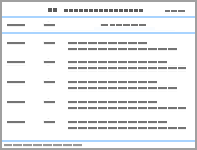SLOSS争论研究进展: 分析方法、理论机制及保护实践
章洋, 王彦平
生物多样性
2025, 33 ( 7):
25081-.
DOI: 10.17520/biods.2025081
生物多样性保护领域中的SLOSS (single large or several small)争论概述了在总面积相等或资源有限的情况下, 应该优先保护一个大的保护区(SL)还是几个小的保护区(SS)来最大化保护物种多样性的问题。自20世纪70年代以来, 该问题一直备受生态学家和保护生物学家的关注, 其研究对于保护区设计以及生物多样性保护具有重要意义。随着研究方法的发展和交叉学科的兴起, SLOSS争论在分析方法和理论机制方面都取得了重要的阶段性进展。本文通过文献检索和归纳总结对SLOSS争论的研究现状进行了综述。首先, 我们回顾了SLOSS争论的起源及其对生物多样性保护的重要性。其次, 本文概括评估了SLOSS争论在实证研究和理论方面的分析方法, 包括零模型法、经典的物种累积曲线法以及由该方法所计算出来的饱和指数。随后, 本文还回顾了以往研究者提出的改进的饱和指数, 并介绍了我们所开发的优化后的饱和指数。此外, 本文探讨了几种影响SLOSS争论的理论机制, 如由灭绝率和定殖率的变化所主导的灭绝-定殖动态理论机制及其相应的检验方法。最后, 本文对该领域进行了总结和展望并为未来的发展方向提出了一些针对性建议, 包括采用多种保护策略的重要性以及在保护区规划中经济和生态因素的结合的必要性。本文整合了SLOSS争论中常用的分析方法的适用场景与局限性, 比较了不同方法在划分保护优先级时的优势和争议点, 可为研究者在方法选择及保护规划权衡方面提供参考。
概念
Concept | 定义
Definition | 对SLOSS争论的解释或与SLOSS争论的关联
Explanation of the SLOSS debate or correlation with the SLOSS debate | 发生的尺度
Scale of occurrence | 参考文献
References | SLOSS争论
SLOSS debate | ①在总面积不变的情况下, 一个大的保护区(SL)还是几个小的保护区(SS)能容纳更多的物种? ②当总面积恒定时, 一个大的保护区(SL)还是几个小的保护区(SS)能最大限度地延长物种的灭绝时间、种群持久性或扩大种群规模? ① Can single large protected area (SL) or several small protected areas (SS) hold more species while keeping the total area unchanged? ② Can single large protected area (SL) or several small protected areas (SS) maximize the duration of species extinction, population persistence, or population size expansion while keeping the total area constant? | SLOSS争论需要解决的基本问题。The fundamental issue that need to be addressed in SLOSS debate. | 景观 Landscape | Diamond, 1975; Simberloff & Abele, 1976; Ovaskainen, 2002; Groeneveld, 2005 | 生境破碎化
Habitat fragmentation | 一大片栖息地转变为总面积较小的若干栖息地的过程, 这些小栖息地被不同于原始栖息地的基质隔离开来。A large expanse of habitat is transformed into a number of smaller patches of smaller total area, isolated from each other by a matrix of habitats unlike the original. | SLOSS争论是生境破碎化问题的一个特例, 但由SLOSS问题得出的多个小斑块可维持更高的生物多样性的结论不等同于生境破碎化是无害的。The SLOSS debate is a special case of the habitat fragmentation problem, but the conclusion drawn from the SLOSS problem that multiple small patches can maintain higher biodiversity does not necessarily mean that habitat fragmentation is harmless. | 景观 Landscape | Wilcox & Murphy, 1985; Wilcove et al, 1986 | 生境丧失
Habitat loss | 栖息地从景观中通过不同的方式被移除。Habitats are removed from the landscape in different ways. | 生境丧失导致景观中栖息地总面积(总生境数量)的减少, 然而对于SLOSS争论的探讨则必须控制总面积不变。Habitat loss leads to a decrease in the total area of habitat (total number of habitats) in the landscape, but the discussion of the SLOSS debate must maintain the total area unchanged. | 景观 Landscape | Fahrig, 2003 | 生境破碎化本身
Habitat fragmentation per se | 一个给定的区域被划分为更多的独立区域或斑块, 并且该过程与生境丧失或面积损失无关。A given area is divided into more separate areas or patches and the process is not associated with habitat loss or area loss. | SLOSS类型的研究本质上是对生境破碎化本身的检验, 例如几个小斑块更好的结果支持了生境破碎化本身的积极影响, 且在具体分析时均需对栖息地总量进行控制。The SLOSS type studies are essentially tests of habitat fragmentation per se. For example, better result of several small patches supports the positive effects of habitat fragmentation per se, and both issues require controlling the total amount of habitat when analyzing them specifically. | 景观 Landscape | Fahrig, 2003, 2017 | 边缘效应
Edge effect | 由两个生态系统被一个突然的过渡(边缘)隔开而形成, 是两个相邻生态系统之间相互作用的结果。Formed by two ecosystems separated by an abrupt transition (edge) as a result of interactions between two adjacent ecosystems. | 负的边缘效应会导致小斑块中物种的灭绝风险增加, 从而预测SL > SS; 在较为破碎化的景观中, 对于给定数量的栖息地, 正的边缘效应会对一些物种的多度产生积极影响, 可能会预测SS > SL。Negative edge effects lead to the increased extinction risk for species in small patches, thus predicting SL > SS. In more fragmented landscapes, for a given number of habitats, positive edge effect will positively influence the abundance of some species, possibly predicting SS > SL. | 斑块 Patch | Murcia, 1995; Fahrig, 2002; Fletcher et al, 2018 | 景观连通性
Landscape connectivity | 景观在多大程度上阻碍或促进了物种或资源在斑块之间的移动。The extent to which the landscape impedes or facilitates the movement of species or resources between patches. | 当生境总量不变时, 更破碎化的景观中小斑块的数量更多, 这些较小斑块可以作为垫脚石以提高连通性, 从而预测SS > SL。When the total amount of habitat is held constant, there are more small patches in a more fragmented landscape, and these smaller patches can be used as stepping stones to improve connectivity, thus predicting SS > SL. | 景观 Landscape | Taylor et al, 1993; Tischendorf & Fahrig, 2000; Fahrig et al, 2011 | 灭绝债务
Extinction debt | 由于栖息地破坏或环境退化导致的物种灭绝的滞后现象。Lags in species extinction due to habitat destruction or environmental degradation. | 若灭绝债务比迁入亏缺偿还的速度更快, 随着时间的推移, 小斑块的生物多样性会显著下降, 对应于SL > SS策略。If extinction debt is repaid more quickly than colonization credit, biodiversity in small patches declines significantly over time, corresponding to the SL > SS strategy. | 景观 Landscape | Tilman et al, 1994; Jackson & Sax, 2010 | 迁入亏缺
Colonization credit | 适宜生境恢复或新建后物种因扩散限制或繁殖滞后的延迟迁入现象。The phenomenon of delayed immigration of species due to diffusion restrictions or delayed reproduction after the restoration or construction of suitable habitats. | 当物种在斑块中的定殖率超过灭绝率时, 几个小保护区可能通过迁入亏缺逐步恢复生物多样性, 对应于SS > SL策略。When the colonization rate of species in patches exceeds the extinction rate, several small protected areas may gradually restore biodiversity through colonization credit, corresponding to the SS > SL strategy. | 景观 Landscape | Jackson & Sax, 2010 | SLOSS分析
SLOSS analysis | 利用实证方法、理论方法以及理论机制分析SLOSS问题。Analyzing the SLOSS issue using empirical and theoretical approaches as well as theoretical mechanisms. | 通过物种累积曲线法、零模型法、理论模型法等来探讨SLOSS争论; 由SLOSS分析得出的结论可用于指导保护区设计。SLOSS debate is explored through methods such as the species cumulative curve method, the null modeling method, and the theoretical modeling method; Conclusions drawn from SLOSS analysis can be used to guide protected area design. | 景观 Landscape | Ovaskainen, 2002; Groeneveld, 2005; Tjørve, 2010; Fahrig et al, 2022 |
View table in article
表1
与SLOSS争论相关的概念
正文中引用本图/表的段落
根据保护目的, SLOSS争论大致可以分为两类: (1)物种丰富度SLOSS问题, 主要关注在总面积不变的情况下, 单个大的保护区和几个小的保护区哪种容纳的物种数更多; (2)集合群落SLOSS问题, 重点在于探讨当保护区总面积恒定时, 如何确定最优保护区的数量和大小, 从而最大限度地延长物种灭绝时间或扩大单一物种的种群规模(Groeneveld, 2005) (表1)。关于物种丰富度SLOSS问题的研究工作主要以实证分析为主, 而对于集合群落SLOSS问题则主要基于生态学理论机制, 二者为SLOSS争论提供了不同的解决方案。在过去三十年里, 大多数针对SLOSS争论的实证研究普遍发现“SS > SL”模式(Fahrig, 2020), 这与Diamond (1975)最初提出的“SL > SS”模式相悖, 且随着研究的深入, 越来越多的证据表明SLOSS问题远比设想的复杂。例如SLOSS争论需要综合考虑内因和外因以及这些因素在不同地区和不同时间尺度上的表现; 此外, 它们可能单独发生, 也可能相互作用, 从而形成多种情况(Kingsland, 2002; Fahrig et al, 2022), 这导致大多数生态学家认为SLOSS问题不存在脱离具体情境的答案(Sarkar, 2012)。换句话说, SLOSS争论应该视情况而定。因此, 在一段时期内, SLOSS争论几乎处于停滞状态。直到最近, 由于生境丧失和“生境破碎化本身” (habitat fragmentation per se)在多大程度上造成物种多样性丧失的问题引起了不少学者对小斑块保护价值的关注(Hovestadt et al, 2024), SLOSS争论一词才又重新出现于生态学文献中。
本文的其它图/表
-
 图1
物种累积曲线法(SLOSS比较法)示意图。在给定的栖息地总面积下, (a)从小到大的曲线完全高于从大到小的曲线, 代表SS > SL; (b)从大到小的曲线完全在从小到大曲线的下方, 代表SL > SS; (c)两条曲线交叉(inconclusive), 代表无法确定。
图1
物种累积曲线法(SLOSS比较法)示意图。在给定的栖息地总面积下, (a)从小到大的曲线完全高于从大到小的曲线, 代表SS > SL; (b)从大到小的曲线完全在从小到大曲线的下方, 代表SL > SS; (c)两条曲线交叉(inconclusive), 代表无法确定。
-
 表2
现有饱和指数和SLOSS指数及其特征
表2
现有饱和指数和SLOSS指数及其特征
-
 图2
累积种-面积关系曲线示意图。数据点之间的线段按S = cAz进行非线性插值而来, 虚线代表从大到小曲线上的最大斑块面积对应的点与原点的非线性累积趋势。
图2
累积种-面积关系曲线示意图。数据点之间的线段按S = cAz进行非线性插值而来, 虚线代表从大到小曲线上的最大斑块面积对应的点与原点的非线性累积趋势。
-
 图3
用于表征从小到大累积曲线(红色)和从大到小累积曲线(灰色)之间偏差的ξ统计量以及指标ΔA示意图。Ψ代表从最大斑块面积推导出的两条曲线下面积的差值; ΔA表示估算两个面积的区域范围。图(a)表示ξ统计量为正的情况, 图(b)代表ξ统计量为负的情况。
图3
用于表征从小到大累积曲线(红色)和从大到小累积曲线(灰色)之间偏差的ξ统计量以及指标ΔA示意图。Ψ代表从最大斑块面积推导出的两条曲线下面积的差值; ΔA表示估算两个面积的区域范围。图(a)表示ξ统计量为正的情况, 图(b)代表ξ统计量为负的情况。
-
 图4
推导ISU和IDI指数的示意图。(a)表示直接将黄色区域面积减去或除以黄色区域和紫色区域面积之和的情况; (b)表示将所有黄色区域的面积相加再对全部的黄色区域和紫色区域面积的总和作减法或除法的情况。
图4
推导ISU和IDI指数的示意图。(a)表示直接将黄色区域面积减去或除以黄色区域和紫色区域面积之和的情况; (b)表示将所有黄色区域的面积相加再对全部的黄色区域和紫色区域面积的总和作减法或除法的情况。
-
 表3
现有理论模型及目标评估
表3
现有理论模型及目标评估
-
 表4
预测SLOSS模式的理论假说和机制(修改自Fahrig等, 2022)。SL: 一个大的保护区; SS: 几个小的保护区。
表4
预测SLOSS模式的理论假说和机制(修改自Fahrig等, 2022)。SL: 一个大的保护区; SS: 几个小的保护区。
-
 图5
当物种呈聚集分布时, 少量大斑块相交的物种数量(a)少于几个小斑块(b)和(c)。不同的颜色及相应的形状代表生境丧失前单个连续栖息地中的不同物种。黑色方框代表因生境丧失而形成的斑块。当少数大斑块和几个小斑块的斑块边缘之间的最大距离相等或类似时, 几个小斑块集能更均匀地覆盖在整个景观中, 因此相交的物种数更多(Fahrig et al, 2022)。(a)中2个大斑块与3个物种相交, 然而(b)中5个小斑块与6个物种相交。在斑块之间相距较远的情况下, 这种效应还会放大: (c)中5个小斑块相交了11个物种(该图改自Fahrig等, 2022)。
图5
当物种呈聚集分布时, 少量大斑块相交的物种数量(a)少于几个小斑块(b)和(c)。不同的颜色及相应的形状代表生境丧失前单个连续栖息地中的不同物种。黑色方框代表因生境丧失而形成的斑块。当少数大斑块和几个小斑块的斑块边缘之间的最大距离相等或类似时, 几个小斑块集能更均匀地覆盖在整个景观中, 因此相交的物种数更多(Fahrig et al, 2022)。(a)中2个大斑块与3个物种相交, 然而(b)中5个小斑块与6个物种相交。在斑块之间相距较远的情况下, 这种效应还会放大: (c)中5个小斑块相交了11个物种(该图改自Fahrig等, 2022)。
|

